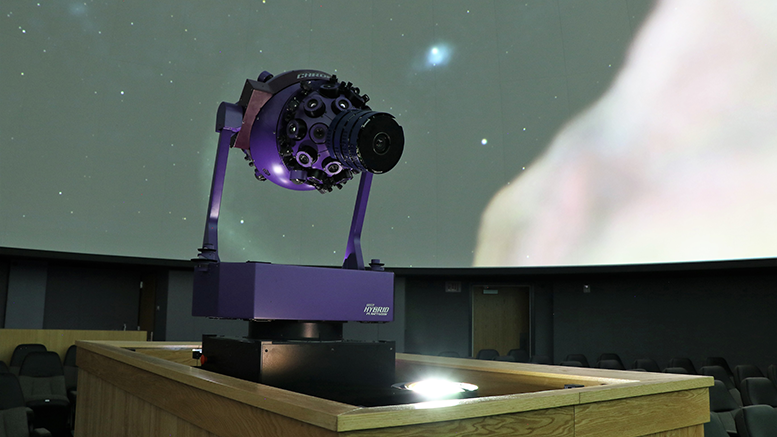By: Ball State Marketing & Communications—
Muncie, IN —The Charles W. Brown Planetarium at Ball State University is joining the fight against COVID-19 as its computers are being used as part of a global supercomputer to help researchers better understand the coronavirus.
Typically, planetarium staff would be presenting programs to thousands of visiting school kids and members of the public, but with the recent COVID-19 pandemic, the dome is empty and the computers are idle.
“This is an important use of our planetarium at a time when the medical community across the globe is seeking answers to address COVID-19,” said Dayna Thompson, planetarium director. “The planetarium community has really come together during this time to help each other continue their efforts to do science outreach and research.”
Brown Planetarium’s computers are now running BOINC’s Rosetta@home. Rosetta@home is a computing project for protein structure prediction on the Berkeley Open Infrastructure for Network Computing platform, run by the Baker Laboratory at the University of Washington.
By running this program, computers around the globe can help form a virtual supercomputer that helps scientists understand the coronavirus. Rosetta@home is trying to determine the 3D shapes of proteins – the “molecular machines and building blocks of life,” BOINC’s website says.
“By understanding the structure of the proteins that are important to the disease, researchers can then help combat it,” Thompson said.
“I reached out to our vendor with the idea and just two days later, the program was up and running,” said Thompson, who learned about the Rosetta@home project from the planetarium community. “Our planetarium is now running the program on nine high-end computers and plans to volunteer more planetarium computers to these efforts soon.”
She noted that other planetariums have been contributing to these efforts, and more planetariums are planning to get their systems set up to help.
Many other individuals are sewing masks and creating other materials to help protect the people in their communities from COVID-19. Brown Planetarium staff member Rachel Williamson is working on her own time to sew masks to help protect friends, family members, and others.
About Ball State
Founded in 1918 and located in Muncie, Ball State University is one of Indiana’s premier universities and an economic driver for the state. Ball State’s 22,500 students come from all over Indiana, the nation, and the world. The 790-acre campus is large enough to accommodate first-rate facilities and 19 NCAA Division I sports, but our welcoming and inclusive campus is small enough to ensure the friendliness, personal attention, and access that are the hallmarks of the University. Destination 2040: Our Flight Path establishes Ball State’s ambitious goals for our second century. We Fly!



